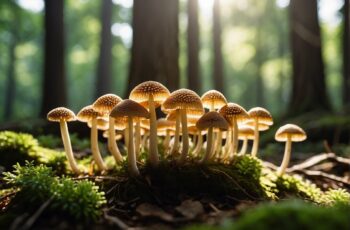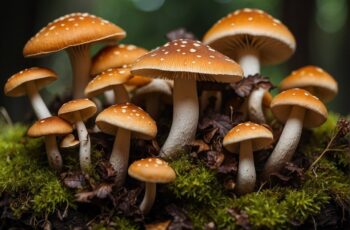Venturing into the woods to forage for wild mushrooms can be an exciting quest—a blend of a treasure hunt and a nature walk that provides not just a culinary reward but also a deeper connection with the environment. Edible wild mushrooms offer a unique flavor and texture that can elevate any dish, but learning to safely identify and harvest them is the key to enjoying their bounty. Before you set out, it’s essential to arm yourself with knowledge to navigate the diverse and often mysterious world of fungi.
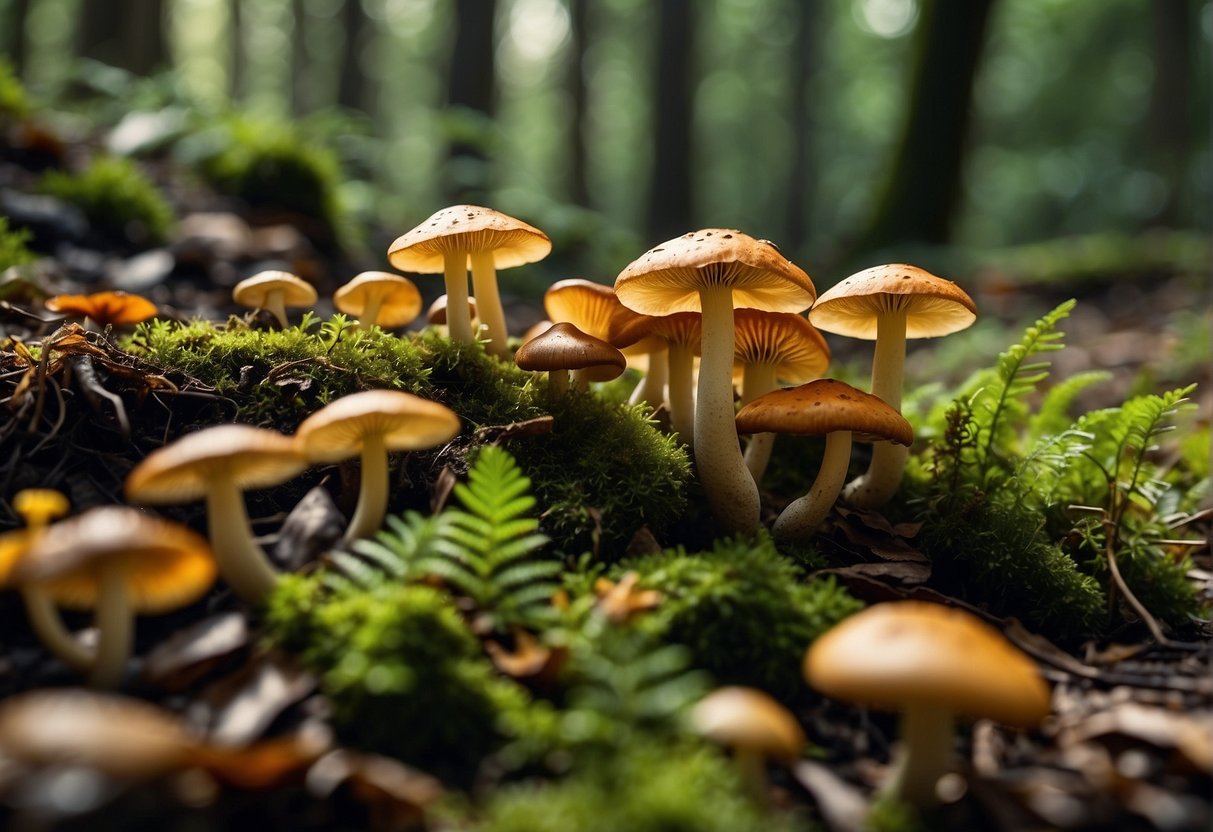
Wild mushrooms inhabit a variety of ecosystems, and understanding the habitat and seasons can vastly improve your foraging success. Each species has specific environmental requirements, so recognizing where and when to look is crucial. Carrying a reliable wild mushroom guide is beneficial for on-the-spot identification, and consulting local experts or joining foraging groups can add to your mushroom hunting acumen. Remember, foraging is not just about the harvest; it’s about respecting and preserving the natural environment, so always forage sustainably.
Key Takeaways
- Foraging for wild mushrooms combines culinary excitement with a deepened appreciation for nature.
- Proper identification and knowledge of habitats are paramount for the safety and success of foraging.
- Sustainable foraging practices help preserve the delicate balance of our ecosystems.
Getting Started with Mushroom Foraging
Mushroom foraging is a fulfilling outdoor activity that combines the thrill of the hunt with the satisfaction of gathering your own food. To ensure your foraging is successful and safe, it’s important to grasp the basics and gear up correctly.
Understanding the Basics
Mushroom hunting is more than picking fungi; it requires developing keen identification skills. Start by learning the different mushroom species in your area, focusing on both edible and toxic varieties to ensure your safety. Hands-on experience with an experienced forager can be invaluable; consider joining a local mycology club to gain knowledge from seasoned foragers.
- Learn to Identify: Familiarize yourself with the key features of mushrooms, such as cap shape, color, gills, stem, and spore color.
- Habitat Knowledge: Understand the environments where specific mushrooms flourish – some prefer damp areas under certain trees, while others grow in open fields.
- Seasonal Timing: Know when different mushrooms are likely to appear; most have a season when they’re most abundant.
Essential Tools and Equipment
To embark on your mushroom foraging adventure, you’ll need to gear up with some essential tools. Here’s what you should consider bringing:
- Field Guide: A waterproof, regional mushroom field guide is key for on-the-spot identification.
- Knives: A sturdy knife for harvesting and a brush for cleaning dirt off your finds.
- Basket or Mesh Bag: Allows for air circulation to keep your mushrooms fresh.
- Compass/GPS: Navigate unfamiliar woods without getting lost.
- Appropriate Clothing: Long sleeves and pants to protect from insects and thorns, and a hat for sun protection.
Remember, take only what you can use to avoid wastefulness, and tread lightly to preserve the natural habitat for future foragers.
Recognizing Edible Wild Mushrooms
When you’re out in the wild searching for edible mushrooms, it’s critical to know exactly what you’re looking at. Misidentification can lead to serious health risks. Fortunately, certain characteristics can help you identify common edibles, and a few species are considered beginner-friendly due to their unique features.
Characteristics of Common Edible Mushrooms
Identifying edible mushrooms requires close attention to detail. Here are some key characteristics:
- Chanterelles: These have a distinctive yellow or orange color with a funnel shape. They possess a gentle, peppery taste and are often found in mossy forests. Their gills appear as forked, blunt ridges running down the stem rather than being thin and separate.
- Morels: Easily recognizable due to their honeycomb-like appearance on the cap, morels are a spring favorite. They vary in color from tan to dark brown and have a spongy texture. Always cook morels before consuming, as they can be toxic when raw.
- Oyster Mushroom: With a fanned-out, oyster-like shape, these mushrooms are often found on the sides of trees. They range from white to grey and have a soft, delicate texture.
- Hen of the Woods: Also known as Maitake, this mushroom grows at the base of trees, particularly oaks. It forms large, overlapping clusters and has a firm, meaty texture.
The Foolproof Four
For beginners, there are a select few mushrooms known as the ‘Foolproof Four’ that are safe, easy to identify, and plentiful:
- Morels: Mentioned above, their unique cap is unmistakeable.
- Chanterelles: Their vibrant color and false gill structure are telltale signs.
- Hen of the Woods: Not to be confused with the Chicken of the Woods, this mushroom is sought after for its plentiful growth and medicinal properties.
- Puffballs: Only edible when the flesh is pure white; any hue of yellow or green is a signal to avoid them.
As you forage, take a guidebook or use a wild mushroom identifier to help with the identification process. Remember, if you’re ever in doubt, it’s safer to leave the mushroom untouched. Your safety is paramount when foraging for these forest delicacies.
The Dangers of Wild Mushroom Misidentification
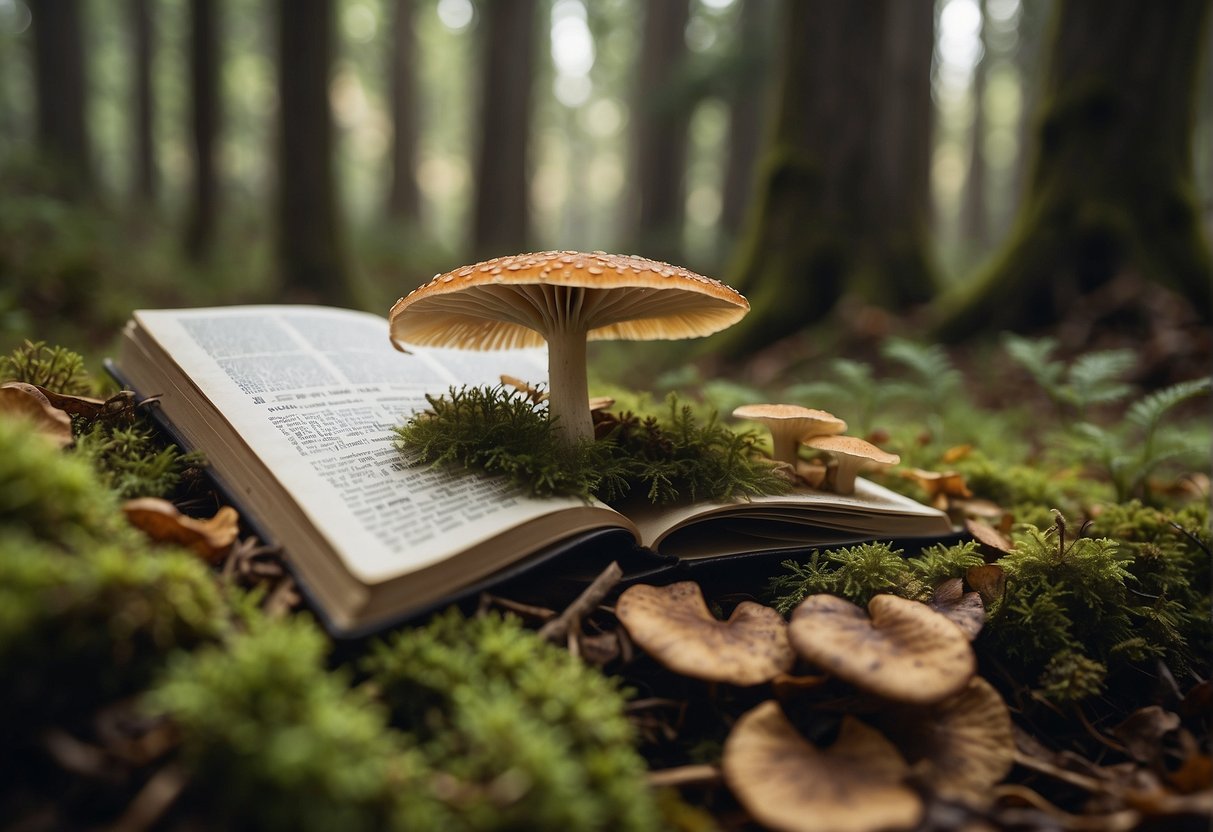
When foraging for wild mushrooms, correctly identifying your find is crucial for your safety. Misidentifying mushrooms can result in consuming species with potentially dangerous toxins, leading to serious health risks.
Poisonous Mushrooms to Avoid
Amanita Species:
Many poisonous mushrooms belong to the Amanita genus. For instance, the notorious Amanita phalloides, known as the Death Cap, contains deadly toxins that can cause liver and kidney failure. Another hazardous Amanita species is Amanita muscaria, which is toxic and can cause severe neurological effects.
False Morels (Gyromitra spp.):
Resembling the edible true morels, false morels are dangerous because they contain gyromitrin, a toxin that can lead to neurological and liver problems.
Little Brown Mushrooms (LBMs):
This non-scientific term refers to a variety of small, brown, hard-to-identify fungi, some of which may be poisonous. Given their nondescript appearance, it’s best to avoid these unless you have expert knowledge.
Keep in mind that many edible mushrooms have dangerous look-alikes, and one small misidentification can lead to dire consequences.
Safety Measures and Best Practices
Use Reliable Guides:
Always consult up-to-date and region-specific field guides or digital resources, like the comprehensive information on how to identify edible and poisonous wild mushrooms.
Learn from Experts:
If possible, join local foraging groups or workshops to gain hands-on experience with knowledgeable foragers who can teach you to identify both safe and dangerous mushrooms.
Check Each Mushroom:
- Inspect for distinctive features: cap shape, color, gill structure, stem characteristics, and spore color.
- Perform a spore print, as it’s one of the most reliable identification methods.
When in Doubt, Throw it Out:
If you can’t confidently identify a mushroom, or if it exhibits characteristics similar to known toxic species, don’t risk consuming it.
Remember, the best practice is to be 100% sure before eating any wild mushroom. Your health is not worth the gamble.
Wild Mushroom Habitats and Seasons
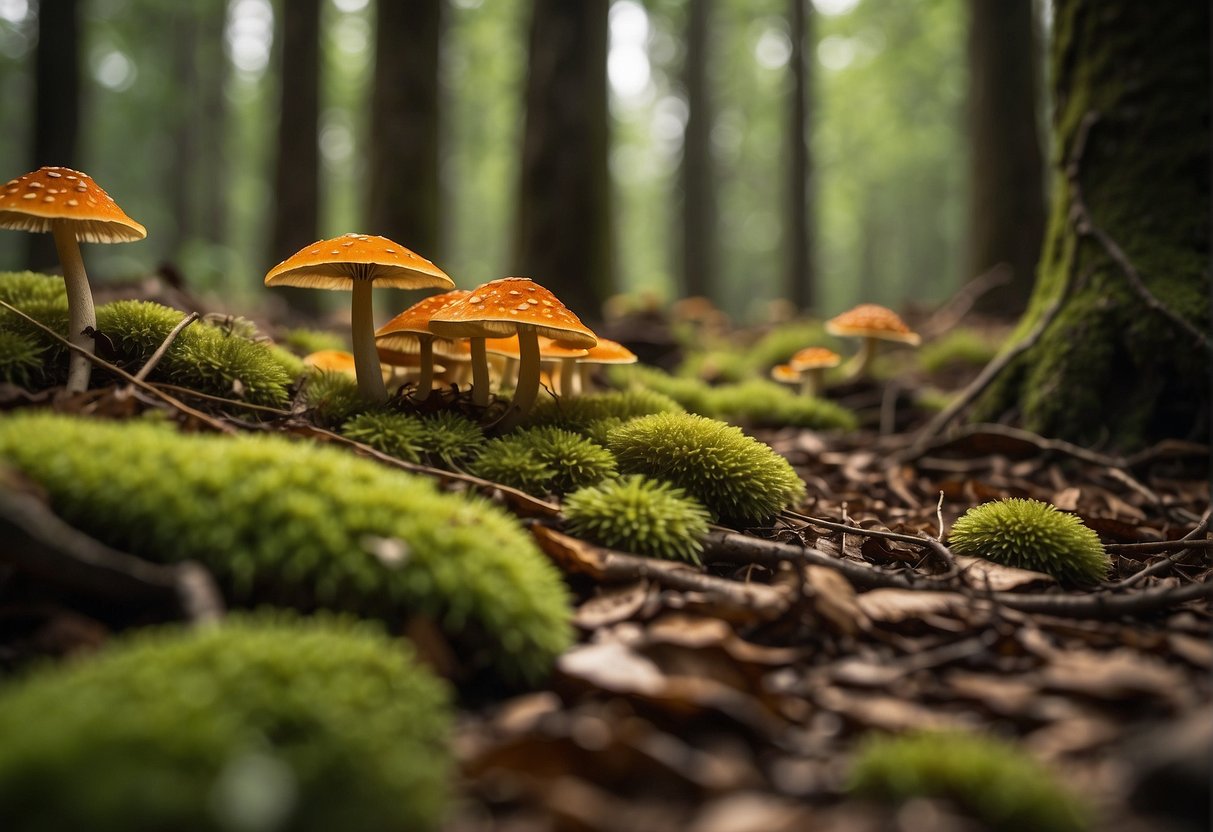
Understanding the precise habitats and seasons crucial for wild mushrooms can significantly boost your foraging success.
Ideal Environments for Mushroom Growth
Mushrooms thrive in diverse environments, each species with its preferred conditions. Woods and forest floors offer an array of micro-habitats ideal for fungal growth. Mushrooms form symbiotic relationships with trees, extracting nutrients and water in exchange for minerals. Search for areas with a dense canopy but where sunlight still filters through. The temperature and moisture in these areas are often just right—cool and damp, fostering the fruiting process of fungi.
Seasonal Mushroom Foraging Tips
To enhance your mushroom hunt, align your outings with seasonal shifts. During the spring, look for morels, which prefer the warming soil after a rain. Come summer, the increased humidity and warmth encourage a variety of mushrooms to fruit, particularly after thunderstorms. As autumn sets in, it becomes prime time for a myriad of species, such as chanterelles, to emerge from the forest floor. Winter brings fewer options, but you can still find hardy varieties like the velvet foot.
Remember, proper identification is paramount for safety. Use a trusted field guide to assist you.
Preserving and Cooking Wild Mushrooms
When you’ve successfully foraged wild mushrooms, the next steps are crucial for maximizing their flavor and shelf life. From the proper techniques of harvesting and storage to the delights of cooking, you’ll learn how to handle your edible finds with care.
Harvesting and Storage Techniques
After picking your wild mushrooms, it’s key to store them properly to maintain freshness. Begin by gently brushing off any dirt using a soft brush, avoiding water as it can hasten spoilage. For storage, wrap your mushrooms in paper towels and place them in a paper bag; this allows the mushrooms to “breathe” and keeps moisture at bay, which can cause them to become slimy. The bag can then be placed in the cooler part of your refrigerator, ideally in the crisper drawer. Remember that different species, like the robust cap mushrooms, can have varying storage needs.
Culinary Uses and Recipes
Wild mushrooms are versatile and can elevate many dishes with their rich flavors. For a simple yet hearty meal, sauté your mushrooms with garlic and herbs, then incorporate them into a delicious soup. The unique textures and tastes of edible mushrooms like chanterelles or morels can turn a soup into a feast for the senses.
Cook them to perfection using these quick tips:
- Sautéing: Heat some oil in a pan over medium heat, add sliced mushrooms, and cook until they release their moisture and turn golden-brown.
- Roasting: Toss them with a bit of oil and your choice of seasonings, then spread on a baking sheet and roast until crispy.
- Grilling: Skewer whole mushrooms or larger caps and grill for a smoky flavor.
Cooking wild mushrooms properly can reduce the risk of foodborne illness and helps to bring out their best flavor. Now that you know the basics, you’re ready to explore the forest of flavors that wild mushrooms have to offer.

